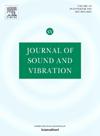High-precision model and open-source software for acoustic backscattering by liquid- and gas-filled prolate spheroids across a wide frequency range and incident angles: Implications for fisheries acoustics
IF 4.9
2区 工程技术
Q1 ACOUSTICS
引用次数: 0
Abstract
Among the few geometries with analytical scattering solutions, the prolate spheroid is perhaps one of the best representative models for various marine organisms or their dominant scattering organs. The mathematical formulation for the exact solution of scattering from prolate spheroids is well-established and known. However, solving these equations presents challenges, including difficulties in efficiently and stably estimating prolate spheroidal wave functions (PSWFs), handling numerical overflow or underflow, and addressing ill-conditioned systems of equations. These issues are addressed in this work, and the model provides stable and precise solutions for both gas- and liquid-filled prolate spheroids across all incident angles and over a wide frequency range. Additionally, the required number of terms to truncate the infinite series of scattering modes is investigated, and empirical formulas are provided. The calculated backscattering results are validated for aspect ratios (i.e., ratio of the longest to the shortest dimension of the prolate spheroid) of up to 10 by comparison with those estimated using finite element methods (FEM). An open-source software package developed with Python and Fortran, is provided alongside this paper.
在宽频率范围和入射角上由液体和气体填充的长形球体进行声学后向散射的高精度模型和开源软件:对渔业声学的影响
在为数不多的具有解析散射解的几何形状中,长形球体可能是各种海洋生物或其主要散射器官的最佳代表模型之一。长形球体散射精确解的数学公式是公认的。然而,解决这些方程存在挑战,包括有效和稳定地估计长球面波函数(pswf),处理数值溢出或下流以及求解病态方程组的困难。在这项工作中解决了这些问题,并且该模型在所有入射角和宽频率范围内为充满气体和液体的长形球体提供了稳定和精确的解决方案。此外,还研究了截断无限序列散射模式所需的项数,并给出了经验公式。通过与有限元方法(FEM)计算的后向散射结果进行比较,验证了计算的后向散射结果在宽高比(即长球体的最长尺寸与最短尺寸之比)高达10的情况下的正确性。本文还提供了一个用Python和Fortran开发的开源软件包。
本文章由计算机程序翻译,如有差异,请以英文原文为准。
求助全文
约1分钟内获得全文
求助全文
来源期刊

Journal of Sound and Vibration
工程技术-工程:机械
CiteScore
9.10
自引率
10.60%
发文量
551
审稿时长
69 days
期刊介绍:
The Journal of Sound and Vibration (JSV) is an independent journal devoted to the prompt publication of original papers, both theoretical and experimental, that provide new information on any aspect of sound or vibration. There is an emphasis on fundamental work that has potential for practical application.
JSV was founded and operates on the premise that the subject of sound and vibration requires a journal that publishes papers of a high technical standard across the various subdisciplines, thus facilitating awareness of techniques and discoveries in one area that may be applicable in others.
 求助内容:
求助内容: 应助结果提醒方式:
应助结果提醒方式:


